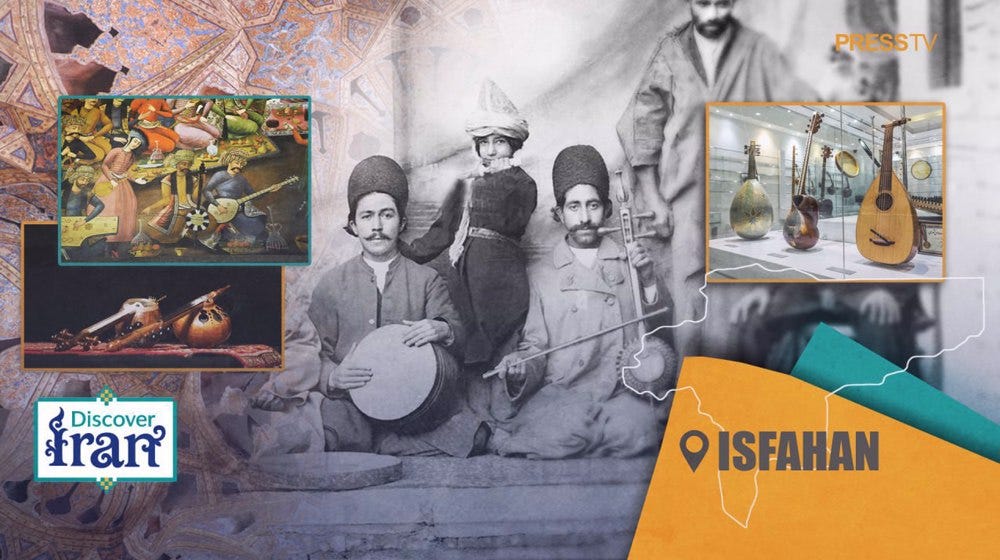Bayat-e Isfahan: A Journey into the Soul of Persian Music
Discover how the melodies of Isfahan echo faith, longing, and centuries of Shia cultural heritage
When travellers speak of Isfahan, they often mention its Safavid mosques, bridges over the Zayandeh Rud, and Naqsh-e Jahan Square. Yet beyond the turquoise tiles and bustling bazaars lies another treasure: the city’s musical legacy, most beautifully expressed in the mode known as Bayat-e Isfahan.
This vocal tradition is more than an art form — it is a mirror of the city’s spiritual heart. To listen to Bayat-e Isfahan is to hear centuries of poetry, faith, and longing woven into sound.
The Spiritual Tone of Bayat-e Isfahan
Belonging to the Homayoun Dastgah (system of Persian classical music), Bayat-e Isfahan is renowned for its melancholic yet tender character. Its flow is gentle, introspective, and full of yearning — much like a whispered prayer or the quiet tears of a pilgrim.
For centuries, this mode has been used to deliver religious poetry, elegies, and devotional songs. At its peak, the Gusheh Oshagh (“Lovers”) captures the deepest human emotions: sorrow, love, and a yearning for the Divine.
Isfahan: A City of Music and Faith
During the Safavid era, when Isfahan became the capital of Shi’a culture and scholarship, music held an honoured place. Princes and poets studied it, while musicians elevated gatherings with refined performances.
Over the centuries, this school of music absorbed influences from nomadic tribes and neighbouring regions — yet it retained a distinct Isfahani identity, one that harmonises perfectly with the city’s rhythm of prayer, scholarship, and artistic devotion.
Even the singing style of Isfahan, called Avaz-e Esfahan, became famous for its elegance, balancing emotion with discipline — just as a scholar balances reason with revelation.
Masters Who Preserved the Flame
The survival of Bayat-e Isfahan owes much to its great teachers and performers:
Seyed Abdolrahim Esfahani trained a generation of singers who kept alive the old styles of Rouzeh-khani (recitation of martyrdom stories) and devotional music.
Abdolhossein Barazandeh fused music with poetry, composing works that remain timeless.
Taj Esfahani, perhaps the most celebrated, refined the School of Isfahan Singing and inspired later icons like Mohammad Reza Shajarian.
In our times, Mohammad Esfahani has carried this tradition into the modern era, often blending sacred tones with contemporary arrangements.
Together, these figures show how Bayat-e Isfahan was not simply performance — it was heritage, devotion, and identity passed from heart to heart.
Experiencing Bayat-e Isfahan Today
For visitors, Isfahan offers more than sightseeing:
Attend a Live Performance: Local cultural houses sometimes host gatherings where Bayat-e Isfahan is performed with poetry.
Visit the Historical Homes: The homes of musicians and poets provide glimpses into the lifestyle that nurtured this tradition.
Explore Sacred Spaces: Recitations in shrines and mosques often employ Isfahani tones, linking music directly to devotion.
To walk through Isfahan while listening to Bayat-e Isfahan is to hear the city breathe — its notes rise like the call to prayer and descend like the calm of evening zikr.
How Shia Journeys Can Help
At Shia Journeys, we believe travel is not just movement — it is discovery of soul, culture, and faith. If you wish to experience Bayat-e Isfahan in its true setting, we can help:
Cultural Pilgrimage Tours: Combining visits to Isfahan’s shrines, mosques, and cultural centres with curated musical experiences.
Private Musical Gatherings: Arranging intimate performances where travellers can listen to Bayat-e Isfahan explained and sung by masters.
Faith and Art Connection: Guiding you through how music, poetry, and Shia spirituality intertwine in the heritage of Isfahan.
Through these journeys, you will not only see Isfahan — you will hear its soul.



